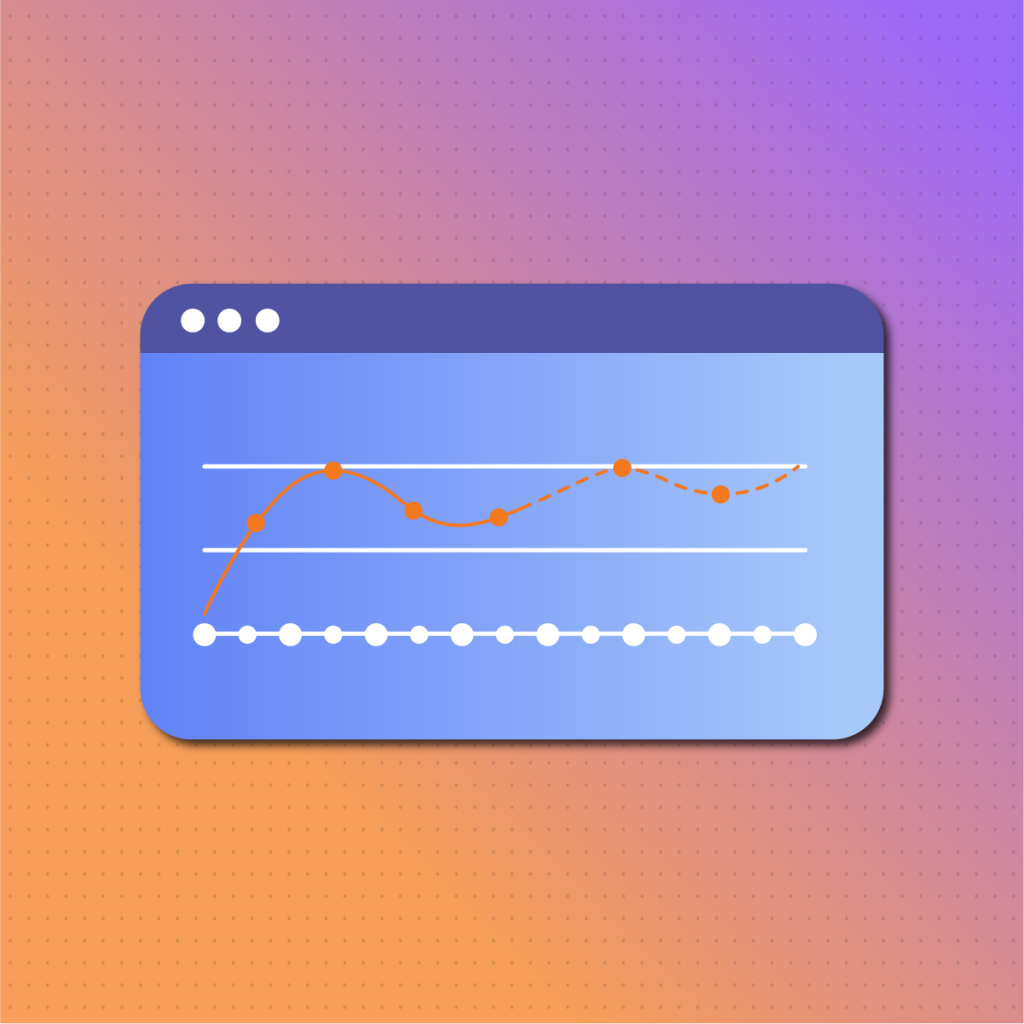In today’s world, almost everything is data. Did you even know that data transforms into power and authority? Your leaders and those in governmental authority are there because of certain data and information they are privy to. The amount of data exposed to you is the amount of value and relevance you will have in the world. Everyone is actually fighting for data to get an upper hand and an edge. This is where the soft data vs hard data conversation comes into play.
This hard data vs soft data analysis will try to cover the meaning of these terms, why they are important, how they are both collected, their differences, and a full detailed analysis of how they both compare and contrast. We will also shed some light on their applications in different fields, like web scraping.
You’ve never read any article about hard data vs soft data so detailed before. Let’s begin.

What is Hard Data?
Hard data refers to quantifiable, objective information that is typically measured and verified through empirical methods. It consists of facts, figures, statistics, and measurable outputs, often derived from structured sources such as databases, surveys, financial reports, and other forms of direct observation. Hard data is essential in fields such as science, finance, and business analytics, where concrete evidence is required to make informed decisions. Because it is objective and measurable, hard data is highly reliable and is often used for analysis, forecasting, and reporting.
Hard data refers to facts or statistics obtained from reliable and valid sources. These results are quantifiable, mostly in the form of figures on tables and graphs. Hard data is the backbone of any data-centric decision-making process. It can be objectively measured because it is mostly numerical and is best used for statistical analysis where precise conclusions are the focal point.
In the business world, hard data might include metrics such as sales figures, customer demographics, website traffic data, or product inventory levels. It is the backbone of decision-making processes because it provides a factual foundation that organizations can rely on to assess performance, measure success, and predict future trends. The verifiability of hard data makes it indispensable for data-driven industries and helps reduce subjectivity in decision-making.
Hard data are also referred to as factual data because they are often collected methodically and can be traced easily.
Features of Hard Data
Some popular features of hard data include the following:
- Objective: This means hard data is factual and definitive. They are not subject to individualised objectivity.
- Numeric: Hard data are often quantifiable and expressed in numbers and figures. For instance, the number of web traffic, sales figures, etc.
- Reliable Source Providers: Hard data are often collected from trusted or authoritative sources like government agencies, schools, medical outfits, etc. These reliable sources collect these data systematically and are void of guesswork.
- Trackable Over Time: Hard data can be traced and measured over time using the repetitive nature of data analytics.
- Precision: Hard data are often accurate and granular. For instance, the exact number of visitors is not an estimated figure.
- Consistency: This means because of the nature of hard data, it can be reproduced multiple times, all the time yielding the same results as long as the metrics are kept constant.
Hard Data Collection
Hard data can be collected from several sources, some of which are phones, computers, sensors, polls and surveys, experimentation, questionnaires, etc.
These different sources can be grouped into the following.
Secondary Collection
This method of hard data collection involves collecting or gathering data from sources that are related or linked to each other. These sources could be newspapers, journals, or research documents. When collecting hard data from secondary sources, you must abide by strict rules to ensure the data are credible, accurate, and reliable.
For example, a newspaper source of raw facts must be one with a credible and reputable public image.
The secondary method of hard data collection is faster, but this does not mean the amount of data collected will be more than the other methods. This is because these kinds of data are not new. They already exist.
Primary Collection
This process involves data collection through several proven scientific and mathematical procedures. As mentioned earlier, polls, questionnaires, and statistics fall under this group. These are good examples of quantitative hard data analysis and collection.
The primary source of data collection follows very strict rules and procedures, which makes them highly reliable and mostly accurate.
Researched Derived Collection
As the name implies, this refers to hard data collected from other sources that contain data that have been previously collected using scientific or mathematical procedures and methodologies. Data from research are often very trustworthy, structured, reliable, and organised. These researches are carried out by expert and certified professionals who have strong credibility and authority in the field they are researching.
Some examples of researched-derived data collection sources are surveys from a sample audience, controlled experiments, questionnaires, etc.
Technology Derived Collection
This refers to data obtained from machines and devices. Everything from temperature readers, smartphones, computers, etc., fall under this category. These types of data are very reliable and accurate because they are derived from calibrated devices that are functioning well.
Importance of Hard Data
Let’s consider some of the purposes and uses of hard data.
We have established that hard data are largely accurate and valid because of how they are collected. This means they can be used for solid statistical analysis, forecasting, optimization, etc.
Let’s assume you want to analyze the stock market performance for the past year to predict the trends and price movement for the future. You can use hard data from reputable platforms to search for specific statistics and numbers. This data collected can offer you key insight into the direction of the stock market in the coming year. However, these data may not explain why they were behaving the way they did. This is where hard data vs soft data meets.
Other important hard data include
- Behavioral patterns
- Trend analysis,
- Forecasting
Examples and Illustrations of Hard Data
Let’s consider some vivid examples of hard data more closely here.
- Web Analytics: These include things like bounce rates, website traffic, click-through rates, quantified visitor behavior, etc.
- Machine Data: Data that fall in this category are Uptime, server load time, error logging, performance monitoring, etc.
- Sales Figures: These types of data include units sold, profit margins, revenue, and exact performance statistics.
- Testing and Experiments: Some examples of these types of hard data are completion times, controlled and measurable outputs, conversion rates, etc.
- Financial Data: These include taxes, revenue, statistical accounting information, profits, etc.
- Operational Metrics: Cycle times, production numbers, internal process tracking, defects, etc.
- Demographics: Education level, age, income, target audience numerical data, etc.
Hard data are always cold, hard, or raw facts. But in most cases, they come from a story involving soft data, and this is where the hard data vs soft data comparison becomes exciting.

What is Soft Data?
Soft data, in contrast, refers to qualitative information that is subjective and often based on opinions, experiences, and perceptions. It includes data collected from sources such as interviews, focus groups, open-ended survey responses, social media comments, and other forms of unstructured or semi-structured input. Soft data provides insights into attitudes, motivations, and behaviors that cannot be easily quantified, but it is essential for understanding the context behind hard data.
Soft data includes any information or data that does not follow standard research protocols, procedures, and methodology. At its core, soft data is qualitative. For example, it involves data or information collected from personal interpretation, opinions, hypothetical scenarios, etc.
Simply put, soft data is commonly attributed to humans. They are not abstract or numerical. This is why it is difficult to measure soft data because they’re not based on numbers. Hence, soft data is likely more unreliable than hard data. This should be one of the key points in any hard data vs soft data guide.
Although soft data are largely unreliable due to their lack of scientific proof, they are often used to supplement hard data to create a more comprehensive picture. Soft data is also collected individually, making it easy for organizations to use it to develop a more immersive comprehension of the motives, behaviors, reactions, and requirements of their customers. This helps these organizations develop effective plans to interact with customers and meet their needs.
While soft data lacks the empirical precision of hard data, it adds depth to data analysis by offering a more nuanced understanding of customer preferences, employee satisfaction, or market trends. In many cases, soft data is used to complement hard data, providing context and meaning that numbers alone cannot offer. It is particularly valuable in fields like marketing, human resources, and customer service, where human experience and sentiment play a significant role in shaping decisions.
Features of Soft Data
Soft data helps to provide insights into attitudes, human behavior, and motivations. It gives flesh to the numbers and metrics captured in hard data. These are some of the key features of soft data.
- Qualitative: Soft data focuses on qualities rather than numbers and figures. It offers nuances.
- Subjective: The results of soft data are based on individual interpretations and perspectives based on a singular point of view.
- Fluid: Soft data can change. They are not fixed. This change is largely dependent on the person providing the information or conducting the analysis.
- Contextual: This means soft data gives insight into settings, circumstances, and details of the hows and whys.
- Directional: Soft data gives a sense of attitudes and behavior rather than a definitive set of measurements.
Soft Data Collection
The collection methods of soft data are quite similar to those of hard data, with just a slight difference. Some of these methods of collection of soft data are discussed below.
Focus Groups
Just like hard data, soft data relies on analogous methods and techniques such as focus groups and interviews. The actual difference between hard data vs soft data difference lies in the kind of information or data that is collected. Rather than collecting facts and figures, this process uses open-ended questions. Focus groups involve gathering ideas, opinions, sentiments, experiences, assessments, and other personal and subjective information that cannot be proven or disproved.
Due to the subjectivity in the nature of this data, their results or findings can not be considered representative or generalized as a sample for any group of body or body of knowledge.
Observations
Here, the researcher must be absorbed into the scene or setting of the research subjects. The respondents, in most cases, are even aware they are the subject of an experiment and may be oblivious to the presence of the observer. Notes can be taken and used as insights.
Case Studies
Soft data collection using the case study method relies on past events, processes, or occurrences. These past activities are analyzed and serve as the bedrock for new data. It is a popular method of data collection that can be used for complex and simple subjects.
One-on-one Interviews
The difference between this type of interview in hard data collection method is the nature and formality of the questions asked. In soft data interviews, the setting is usually informal and conversational. The flow of the discussion determines the kind of questions the respondent asks. Just like focus groups, this method can be full of open-ended questions that actually have no specific direction. This is due to the personal approach involved.
Importance of Soft Data
These are some reasons why soft data is important.
- Soft data provides data and information for analysis
- It can be used as a foundation for in-depth research
- It shows customer intent
- Soft data offers a different perspective
- Soft data are key components of advertisement and marketing]
- Soft data combines with hard data to provide a more comprehensive statistic.
Examples and Illustrations of Soft Data
These are some examples of soft data and how they are used.
- Descriptions: This refers to data like notes, reports, explanations of events, and verbal descriptions.
- Forecasts: Examples are projections, predictions, expected outcomes, and estimates.
- Opinions: Market research, impressions, attitudes, perceptions, reviews, feedback, and survey responses.
- Behavioral Patterns: This focuses on understanding the WHY behind behaviors and actions, habits, trends, motivations, etc.
Differences Between Hard Data vs Soft Data
The key difference between hard data and soft data lies in their nature and usage. Hard data is quantitative, objective, and measurable, whereas soft data is qualitative, subjective, and often based on opinions and interpretations. Hard data comes from structured sources like databases and can be easily verified, making it ideal for analysis, forecasting, and reporting. Soft data, on the other hand, is sourced from unstructured or semi-structured inputs like interviews and surveys, offering insights into human behavior and sentiment.
While hard data provides the concrete facts needed for decision-making, soft data adds context and depth, offering a fuller picture. For example, in a business setting, hard data might tell you how many products were sold, but soft data can explain why customers prefer one product over another. In many cases, the most effective strategies come from combining both types of data—using hard data for objective insights and soft data for understanding the underlying reasons behind the trends.
| Hard Data | Soft Data |
| Collected using machines and technology | Collected using observation |
| Factual data | Hypothetical data |
| Quantitative in nature | Qualitative in nature |
| Data is measurable | Offers insight into data |
| Sources include science, research, methodology, etc. | Sources include social media, observation, interviews, etc. |
| Uses optimization. Analysis, statistics, forecasting, etc. | Uses product, market research, service analysis, etc. |
| Technology-derived data | Human-derived data |
| Credible, traceable, and measurable | Opinionated, hypothetical, contradictory |
Hard Data vs Soft Data Comparison
Let us look at a more detailed hard data vs soft data comparison using the following factors.
Sources of Hard Data vs Soft Data Comparison
Hard data comes from measurable technological sources, while soft data comes from qualitative analysis like reviews, customer feedback, etc. You can use this web scraper API tool to grasp data from multiple sources.
Research Questions
As previously discussed in this hard data vs soft data guide, the nature of the question asked is one of the differences between hard and soft data because both of them use research questions as a tool for data collection.
Hard data asks close-ended questions requiring real figures and facts, but soft data asks open-ended questions based on in-depth reasoning and opinions.
Type of Information Collected
As earlier stated, hard data deals with hard and cold facts that can be proven mathematically or scientifically, while soft data focuses on sentiments, opinions, and other subjective issues.
Application of Hard Data and Soft Data
Hard data is used majorly in areas that require accurate analysis, such as in forecasts or price predictions. On the other hand, soft data is applied in areas where reason and motifs are useful, asking and answering the “why” question.
Generalization Capacity
Since hard data comes from reliable and definitive sources, it can be generalized and used as the basis for future use cases. However, it is difficult to generalize soft data because of its unpredictable nature.
The Role in Various Applications of Soft Data and Hard Data
Hard Data vs Soft Data Role in Web Scraping
Web scraping helps you collect data online from webpages using automated bots and proxies. These bots and proxies break down the webpage into a basic HTML format and extract data from them. This extracted data is then saved and can be used to scale your business, conduct research, etc.
An in-depth understanding of hard data vs soft data can help you know what tools and proxies to use and what data to collect for your business over the Internet.
In addition to social web scraping proxies and bots, there are SER Scraper and Unblocker Scraper tools that will help you bypass advanced anti-bot systems.
Hard Data vs Soft Data Role in Forecasting
Forecasting involves predicting weather patterns, market trends, or customer behavior. They strongly focus on hard data vs soft data understanding.
Hard data in forecasting sets the foundation for the models, numbers, trends, and mathematical algorithms used for prediction. A retailer, for instance, may use his previous sales to predict or forecast his future sales.
Soft data, on the other hand, helps to refine the forecast by providing depth and context. In our last example, soft data might show the retailer new trends like social media razz or preferences that might affect future sales.
Frequently Asked Questions About Types of Data
What is the Major Difference Between Hard and Soft Data?
The most important difference in the hard data vs soft data comparison lies in the fact that hard data is numerical, factual, and objective.
In contrast, soft data is opinionated, interpretive, and subjective.
Is Soft Data Reliable?
No. Soft data depends on human behavior and is subject to change.
Can Soft Data be used Independently?
Depending on the use case, soft and hard data can be used independently of each other
Hard Data vs Soft Data: Final Words
In today’s world, data is very important. This hard data vs soft data guide has been able to provide a rich explanation of these two data types, how they overlap, and how they can be used to make more comprehensive decisions. While hard data focuses on numbers and scientific processes, soft data deals more with human behavior and offers more context to hard data. When used together, soft and hard data can be a great tool for solving complex problems. Read more about data analytics and web proxies here.






